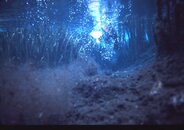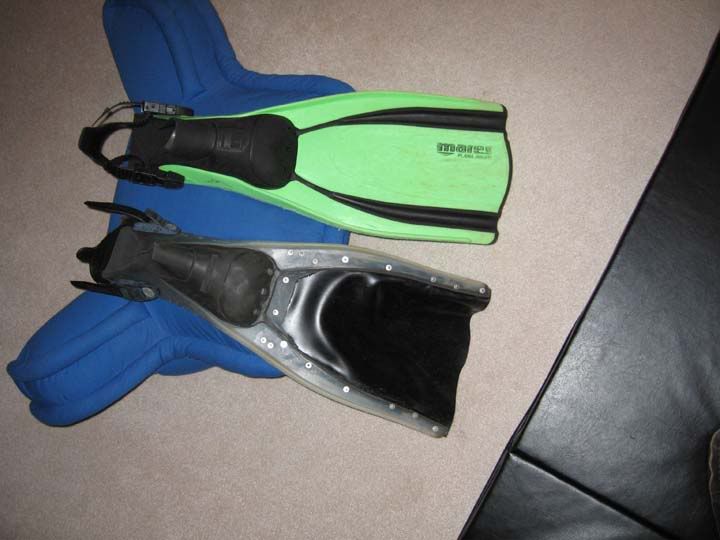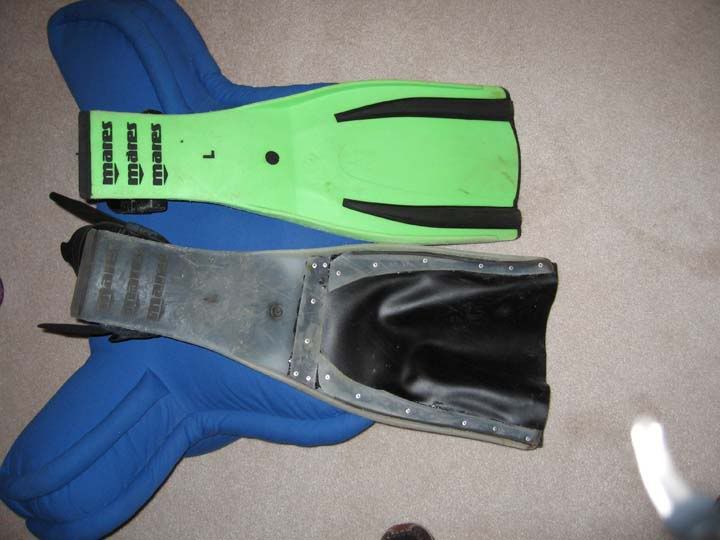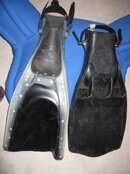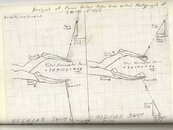John:
Thank you for your continuing contributions to this discussion and references provided.
What are your thoughts on the Mares Avanti and Quattro designs, both being "scoops".
I was in Italy when the Avanti was first introduced and was diving with the Mares crew.
Their comments regarding the concept seem to mirror yours.
Have you ever been diving with these model fins?
mdb,
Yes, I have dived both models. I have a Mares Plana Avanti, and a Quattro Excel in my room with me. I have enjoyed both models, but they are not quite there for the scoop concept. Let me explain; and by the way, they may behave differently here than they do in Italy, as the water here is much colder.
First, the Plana Avanti; this fin has two channel on the outside of the blade. The blade does cup, but not so as to make a semicircle. Also, the cupping motion of the blade does not start until about half way down the blade. Therefore, it looses a lot of its potential.
The Mares Quattro Excel is a great fin, and I really like the new buckle system on it for putting the fins on in colder water (though taking them off using the new system is almost impossible with thick neoprene gloves). This fin is somewhat narrower than the Avanti, but longer. Further, on the downstroke the cupping starts much higher up on the fin, just an inch or two below the foot pocket. This is a great improvement over the Avanti. However, if you look at the upstroke, you get a different story. On the upstroke, because of the design of the channels, the cupping does not start until way down the blade, about half way down actually. This presents a big dead area of the fin on the upstroke. I am tempted to carve away the black rubber on the bottom to give the upstroke a bit more cupping higher on the blade. Overall, this is a better fin than the Avanti, but it does not reach the potential of the scoop fin.
I have included a photo of my modification of an Avanti into a scoop fin, in comparison to the Jet Fin. This is the fin I am currently diving in the Clackamas River, and any other open water that I dive. This fin is wider than the Quattro Excel, and has the same length as the Avanti from which it was made. The cupping action starts an inch below the foot pocket on both the down and up stroke, which gives it more overall ability than either the Quattro Excel or the Avanti. I have also included the scan of the diagram I showed earlier from links so that those with blocked photos can see it.
I have three pair of Mares Plana Plus fins, and have modified them for testing. One is modified by drilling a hole at the top middle of the small blade and splitting the blade lengthwise to make it a split fin. The other is modified into a scoop fin. The third was left as a normal, full-foot blade fin. I don't have photos of those immediately available from my computer, but do have them on Photobucket, and so will show them below:
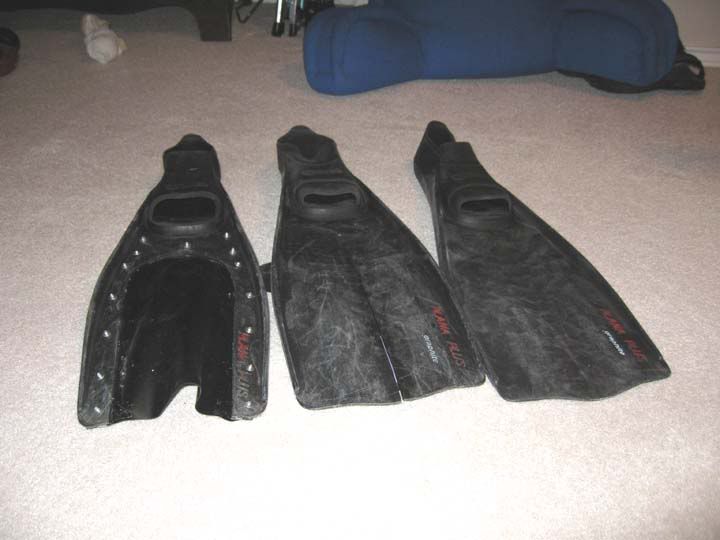
I have tested the three fins, and my conclusion is that the split fin is intermediate between the blade fin and the scoop design in performance. The problem I see with the split fin is that it fails to capture as much water as possible toward the top (foot pocket area) of the fin, and channel it to the rear, and then some of the water it captures escapes through the split. I did these modifications a number of years ago, and so don't have good figures available, but will do some more testing on Friday to see if I can put something together. Here is what the scoop fin's other side looks like:
I also have some photos of the Mares Avanti unmodified, and with the scoop modification:
If someone was adventurous, they could probably get a used pair of Avanti fins for less than $35, got some rubberized fabric or heavy duty PVC sheet material, and make a pair of these for under $50. The need to have the webbing cup to a full 180 degrees at the end, but be fairly flat at the foot pocket. That channels the water toward the rear, which is how the fin provides propulsion.
SeaRat



